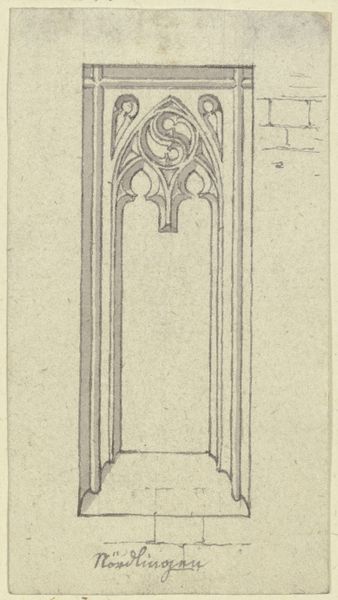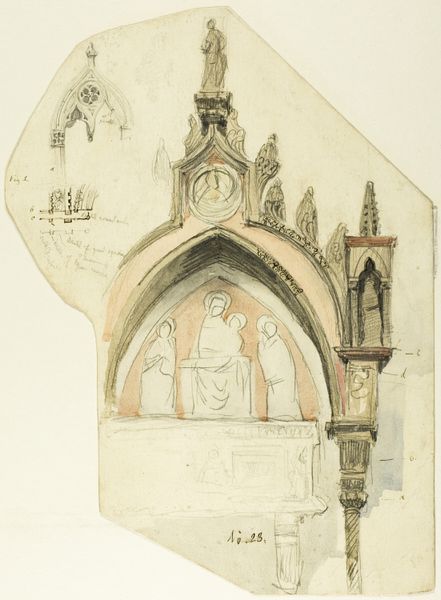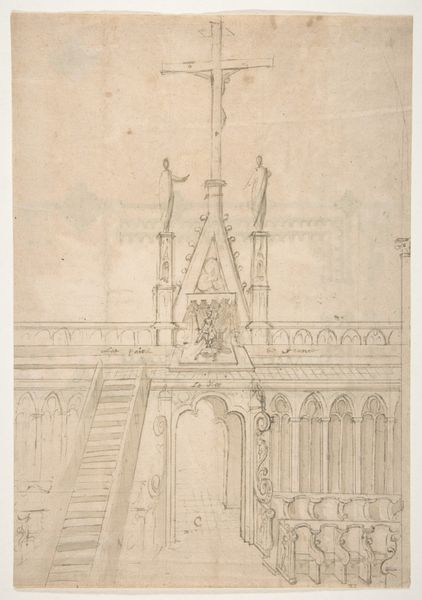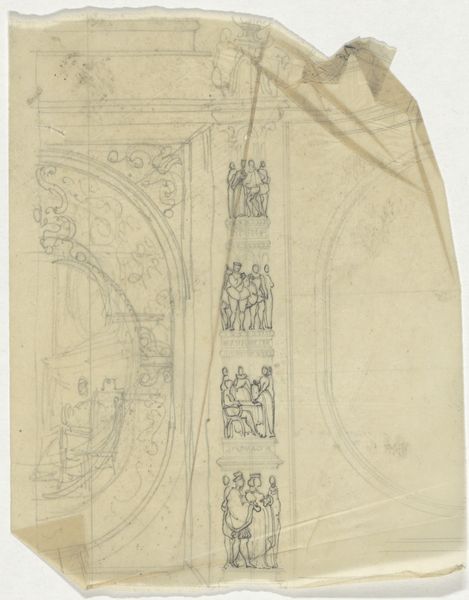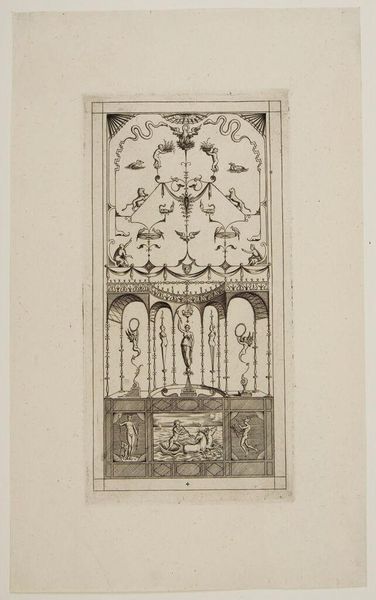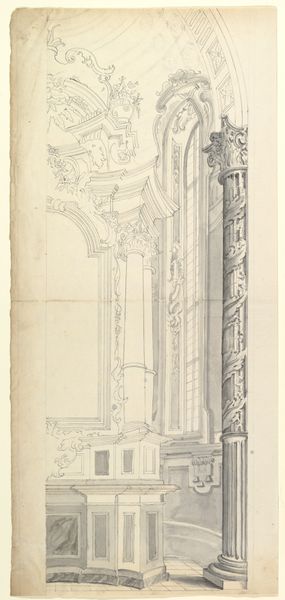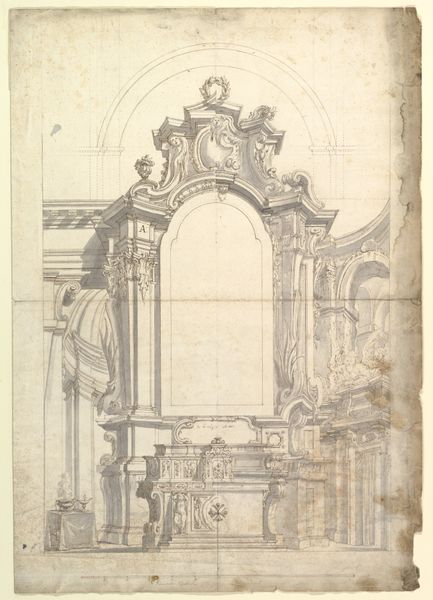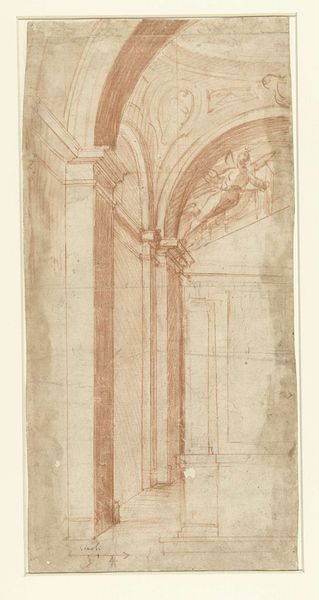
Design for a Stage Set at the Opéra, Paris 1830 - 1890
0:00
0:00
drawing, print, pencil, architecture
#
drawing
#
neoclacissism
# print
#
perspective
#
form
#
pencil
#
line
#
cityscape
#
architecture
Dimensions: Irregular sheet: 8 13/16 x 3 7/16 in. (22.4 x 8.7 cm)
Copyright: Public Domain
Curator: This detailed sketch is Eugène Cicéri's "Design for a Stage Set at the Opéra, Paris," created sometime between 1830 and 1890. The work utilizes pencil and print on paper to capture a Neoclassical scene. What's your first take on this piece? Editor: There's a haunting theatricality, a feeling of grand design. The grayness mutes the splendor I imagine was intended, a strange, melancholic anticipation before the curtain rises. Curator: The sketch evokes a bygone era, reflecting Neoclassical ideals with its balanced composition and architectural motifs. I wonder, how might the architecture of the Paris Opéra itself, a nexus of high society and political display, influence this visual vocabulary of Cicéri? Editor: I think the Opéra was fundamentally aspirational; its architectural language impressed authority on the city's public sphere. Cicéri borrows this rhetoric, promising an escape into an idealized past through performance and pageantry. But I am drawn to how incomplete this sketch is. It's like a ghost of civic performance, which seems fitting given the socio-political turbulence of the time. Curator: The unfinished nature offers insight into process and planning. Consider the carefully rendered lines— the use of perspective speaks to the prevailing ideas of rationality during this era. Are those figures atop the structure Roman or Greek in origin? Perhaps signaling the artistic temperament of the play itself? Editor: They contribute to that sense of frozen grandeur I noticed initially. There's something very calculated about the inclusion of classical figures and their stoic posture; they are meant to signal an enduring cultural authority at a time of social unrest. The lighting fixture brings an additional layer of expectation to the image. Curator: And let's not dismiss that cityscape, albeit gestured, peeking in through that back opening. A city on display inside of another, the echo of our built heritage! Editor: Indeed. To think how many different performances have taken place in front of decors inspired by renderings like this. Today, the image itself stands as a potent historical artifact—a testament to the ongoing interplay between art, politics, and public spectacle. Curator: An apt summary. What begins as an echo becomes the seed for many more echoes down the corridors of time.
Comments
No comments
Be the first to comment and join the conversation on the ultimate creative platform.


